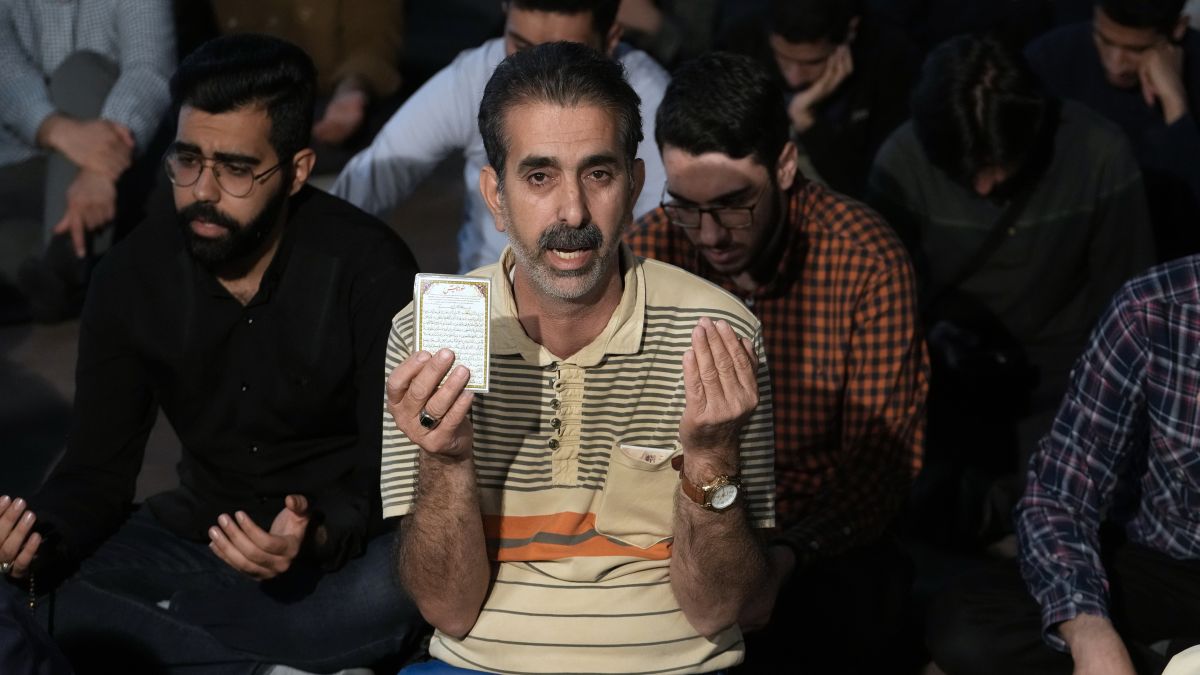Iran woke up to a tragic Monday. After more than 15 hours of search, Iran state TV declared that there was “no sign of life” at the crash site of a helicopter carrying President Ebrahim Raisi and Iranian foreign minister Hossein Amir-Abdollahian . Both the leaders died.
The chopper made a “hard landing” on Sunday after it faced heavy fog in the north of the country. Raisi was heading to the city of Tabriz after returning from an Iran-Azerbaijan border area, according to reports in the local media.
The news agency Reuters reported that the helicopter was “completely burned” in the crash, citing an Iranian official. “President Raisi’s helicopter was completely burned in the crash… unfortunately, all passengers are feared dead ,” the official said.
For Iran, the death of hardliner Raisi is a big loss and comes at a time when the country faces domestic challenges and West Asia is on edge amid the Gaza war.
Also read: Iran’s Ebrahim Raisi dies: What led to the helicopter crash? What will happen next?
What did Ebrahim Raisi’s time as president look like?
Raisi was a hardline cleric close to Iran’s supreme leader Ayatollah Ali Khamenei. He became president in 2021 in a historically uncompetitive election with the conservatives taking complete control of the Islamic Republic.
Impact Shorts
More ShortsThe 63-year-old leader was the former chief justice and he succeeded the moderate Hassan Rouhani against whom he ran unsuccessfully for president in 2017. In 2021, Raisi ran again in an election that saw all of his potentially prominent opponents barred from running under Iran’s vetting system.
With Raisi in power, Iran witnessed repression like never before. A year after the election, he tightened the enforcement of Iran’s “hijab and chastity law”, imposing restrictions on women. In September 2022, Iranian-Kurdish woman Mahsa Amini was arrested for flouting the dress code and died in custody, leading to unprecedented protests.
The cleric supported Iran’s security services as they cracked down on all dissent, including in the aftermath of Amini’s death. The monthslong security action killed more than 500 people and saw over 22,000 detained.
Raisi also supported attacking Israel in a massive assault in April that saw over 300 drones and missiles fired at the country in response to a suspected Israeli attack that killed Iranian generals at the country’s embassy compound in Damascus, Syria. This triggered the widening of a shadow war between the two countries.
Emphasising Iran’s support for Palestinians, he said recently, “We believe that Palestine is the first issue of the Muslim world, and we are convinced that the people of Iran and Azerbaijan always support the people of Palestine and Gaza and hate the Zionist regime.”
Also read: Who is Mohammad Mokhber, who will assume power in Iran after Ebrahim Raisi’s death?
Iran ultimately is run by Ayatollah Ali Khamenei . But as president, Raisi supported the country’s enrichment of uranium up to near-weapons-grade levels. During his time as president, the country also faced grave economic challenges.
Raisi was a controversial figure even before he became Iran’s second-most-powerful leader. When he was the deputy prosecutor of the Revolutionary Court of Tehran, he was allegedly responsible for the mass execution of political prisoners and leftists, earning the dubious moniker “The Butcher of Tehran”.
What does Raisi’s death mean for Iran?
Raisi’s death comes at a time when Iran faces challenges at home and globally.
Under Rasia, the country’s economy continued to suffer because of corruption and mismanagement of the government. The US sanctions have also increased because of the repressive rule in Tehran and because of provocations overseas.
The protests against clerical rule and worsening economic ties after Amini’s death have stopped. However, the opposition to hardline leadership remains entrenched among many Iranians, especially the young, who yearn for reform, jobs and a move away from stifling religious rule, reports CNN.
Amid Irsael’s war in Gaza, tensions continue to soar in West Asia. After last month’s tit-for-tat strikes between Iran and Israel, there have been no direct attacks. However, the proxy war continues as Hamas and Hezbollah , both Iran-backed militias, continue to fight Israel’s forces.
As Iran distanced itself from the West and looked at other allies, Raisi was a big backer of the Ayatollah-led regime. Khamenei is 85 and the country was bracing for a change in leadership in the next few years. However, with the untimely death, the Supreme Leader has lost not only an old loyalist but also a possible successor.
For a new leader, many challenges remain. The dissent at home needs to be controlled. On the diplomatic front, the new president will be expected to continue taking a tough stance against the West and cosy up to Russia and China.
The tensions with Israel are here to say and the new leader will have to take a call on the country’s nuclear programme.
What happens next?
Iran’s constitution has a formal succession system if the president dies or is incapacitated in office.
According to article 131 of the Islamic Republic’s constitution, if a president dies in office the first vice president takes over, with the confirmation of the supreme leader, who has the final say in all matters of state, reports Reuters.
Mohammad Mokhber is then expected to take charge. He is a banker and a former deputy governor of the Khuzestan province. However, few consider him capable of taking over the responsibility of president, say media reports.
The country will hold presidential elections in the next 50 days. However, it remains to be seen who Khamenei will pick as the next president and a possible successor.
With inputs from agencies
)